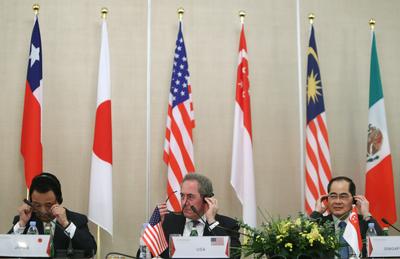One approach is to consolidate existing bilateral free trade agreements (FTAs) into regional blocs, a process similar to solving a regional jigsaw puzzle, and then link them up globally. That is, both regional and global jigsaw puzzles need to be solved (and in that order) if this method is to work. But can it? The short answer is no, while the longer answer starts with the challenges posed by solving the regional jigsaw puzzle followed by the global one. But from these answers we can consider an alternative way forward, which works.
RCEP illustrates the regional puzzle. Like any jigsaw puzzle, we begin with disarray. But the RCEP puzzle could be more than just messy — there is no solution because the pieces of the puzzle, the ASEAN+1 and bilateral FTAs, do not fit together. The only way to make them fit is to reshape them: either to shave them down or to build them up. Shaving down the bits can be thought of as a ‘race to the bottom’, to the lowest common denominator rules, making for an easier fit.
Building them up is the opposite approach, where laggards lift their game to meet the standards set by the front-runners. The only example of successful consolidation like this is the EU. It will be a challenge to avoid RCEP emerging only after a shave down, given the difficulties involved and the need for political will to overcome them.
How would ‘success’ look if RCEP and the other mega-regionals were concluded as intended? Not good, unfortunately. The regional mess would merely be replaced with a mess at the global level with fragmentation of the global trading system into discriminatory and competing trading blocs. To resolve the mess, how should the process of global consolidation then occur? Should it proceed sequentially, or through a single undertaking where the blocs come together to negotiate a comprehensive deal?
A sequential bloc-by-bloc approach, building on open accession clauses, faces the same difficulties as regional consolidation, but would be amplified by greater global diversity. Presumably there would have to be a dominant bloc that sets the standard towards which other blocs would have to converge. If not, it will only reduce the number of pieces in the global jigsaw puzzle, without providing a solution. Assuming a trade war can be averted in the contest to dominate the rule-setting game, it remains unclear whether the other blocs would be willing to accept a process where conformity without compromise is demanded.
The problems with the Doha Round has demonstrated that a single undertaking is probably impractical when the agenda is a serious and wide-ranging one — and substituting groupings of countries for individual states is unlikely to make a significant difference. For this reason, cross-regional link-ups of mega blocs have no precedent. Multiple tie-ups of mega blocs have never even been attempted.
In this environment, one way forward is to return to the most widely used modality of trade liberalisation — unilateral action— but this time involving the multilateralisation of preferences rather than unreciprocated reductions in tariff rates. In Asia, ASEAN’s original members have done this with the ASEAN Free Trade Area, and RCEP countries could follow suit since more than three-quarters of most countries’ imports are already covered or soon to be covered by an FTA.
There is little point in holding out to negotiate reciprocity with the countries accounting for the small amount of trade that remains uncovered. Also, the benefits from reciprocity fall short of multilateralisation when preference utilisation is as low as it is in Asia. The political economy suggests that the resistance from FTA partners towards multilateralisation decreases as the number of FTAs increase, due to preference erosion.
While multilateralisation is easily applied to tariffs, it is also naturally suited to non-tariff barriers (NTBs) and difficult sectors such as services. The removal of many NTBs share public good characteristics. Unlike tariffs, it is either costly or impractical to exclude non-members once an NTB has been removed. Similarly, if services liberalisation is pursued through harmonising standards or regulatory convergence, rather than mutual recognition arrangements, non-members can easily accede later.
Multilateralisation of preferences, whether tariff or non-tariff, presents a practical way out of the current mega-mess. This is a strategy that might recommend itself to negotiators who are charged with the responsibility of delivering RCEP by 2015, or the TPP if it is to be concluded anytime soon.
Jayant Menon is Lead Economist at the Office of Regional Economic Integration, Asian Development Bank, and Adjunct Fellow at the Arndt-Corden Department of Economics, The Australian National University. The views expressed in this paper are those of the author and do not necessarily reflect the views and policies of the Asian Development Bank, its Board of Governors or the governments they represent.

